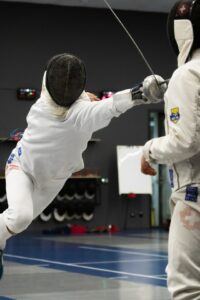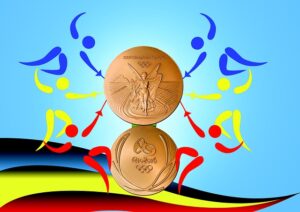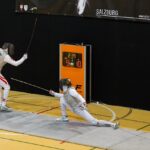Some sports date back a couple of centuries, or even longer, if you take into account prior forms of a sport, or variations which led to new sports. Sports are always considered by historians as an interesting field of study. Some of them do not appear to be as interesting as they actually are, while in fact they have a rich history.
One of the many sports out there that people do not know about is called fencing and it is an Olympic sport and has been for a while now. Here is a brief history overview of fencing at the Olympic games.

Fencing, An Old Sport
Fencing has been around for centuries, so long that people often debate when it was actually founded. Sword duels were around for a long time, since around 3000 BCE. That doesn’t mean that fencing was the sport that we know nowadays, so far back. It evolved over time. In the 18th century, fencing was starting to become a sport which can nowadays be seen on the TV.
It gained prestige because it became what sword duels could be, without the gore and the needless deaths. Dull blades and armor became the norm, making the sport less violent. That in itself, made the sport an ideal choice as an Olympic sport. The modern Olympic Games were first held in 1896 and fencing was among the first sports to be included.
The First Olympics
The first Olympic Games were held in 1896 and there were only 8 sports at the time. These Olympics were interesting though they were not covered by the media as one would cover them nowadays.
Fencing was one of the 8 sports at the games, with three disciplines. There was a fourth one, but it was canceled. In total, fifteen athletes were competing and eight of them won medals. The best performing country was Greece. At the time, there was very little protective gear, only a sort of body armor. No face masks or shields were worn. This was problematic and was soon changed.
The Evolution of Fencing
Fencing evolved through the years, adding epee, foil and sabre for men, while women only had foil until 1996, when epee was introduced and 2000 for sabre. Epee, foil and sabre became permanent Olympic sports in 1912, with some changes between 1896 and 1912.
Refereeing and scoring was done in person until 1933 for epee, which got electronic devices in the form of the Laurent-Pagan scoring devices. Foil got the treatment in 1956 and Sabre in 1988.
Fencing changed mask materials multiple times, notably to Kevlar after the death of Vladimir Smirnov at the World Championships in 1982. Kevlar was later exchanged for Dyneema, a material which does not deteriorate as fast as Kevlar does.

Modern Fencing
Modern fencing is different to the fencing of yesteryear. There are better scoring systems as well as training methodologies.
Traditionally, fencing is tied to universities and is taught as a sport. Competitive fencing is available in most countries in the world, though some obviously have a richer history than others.
At the Olympics, it is still contested every four years, in all three disciplines for men and women. Team categories were also added, for both men and women. Fencing is also a sport contested at the Paralympics.
This was a brief history overview of fencing at the Olympic Games.




